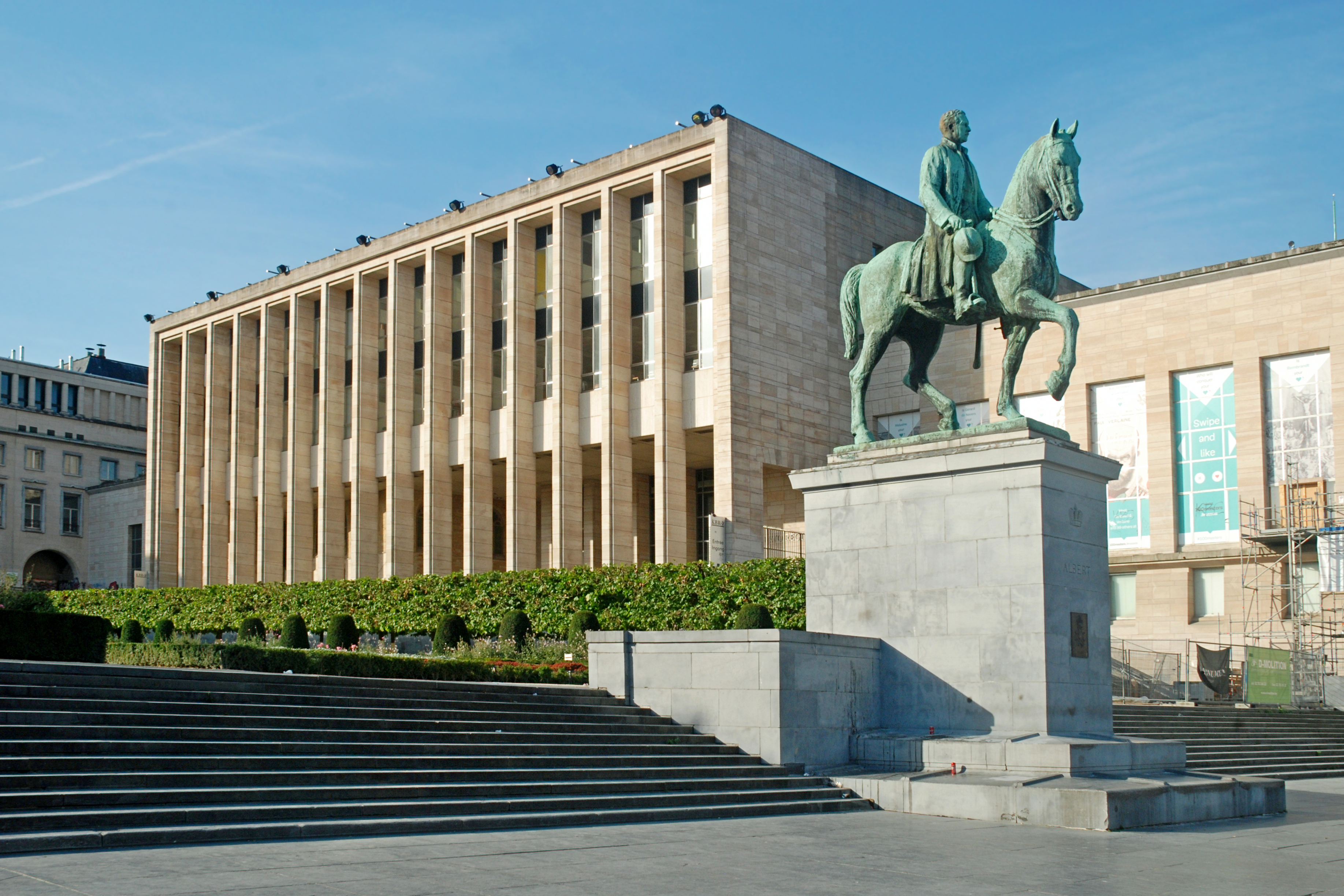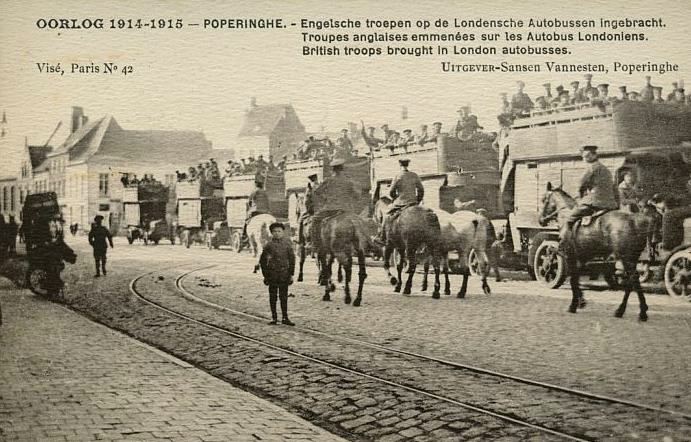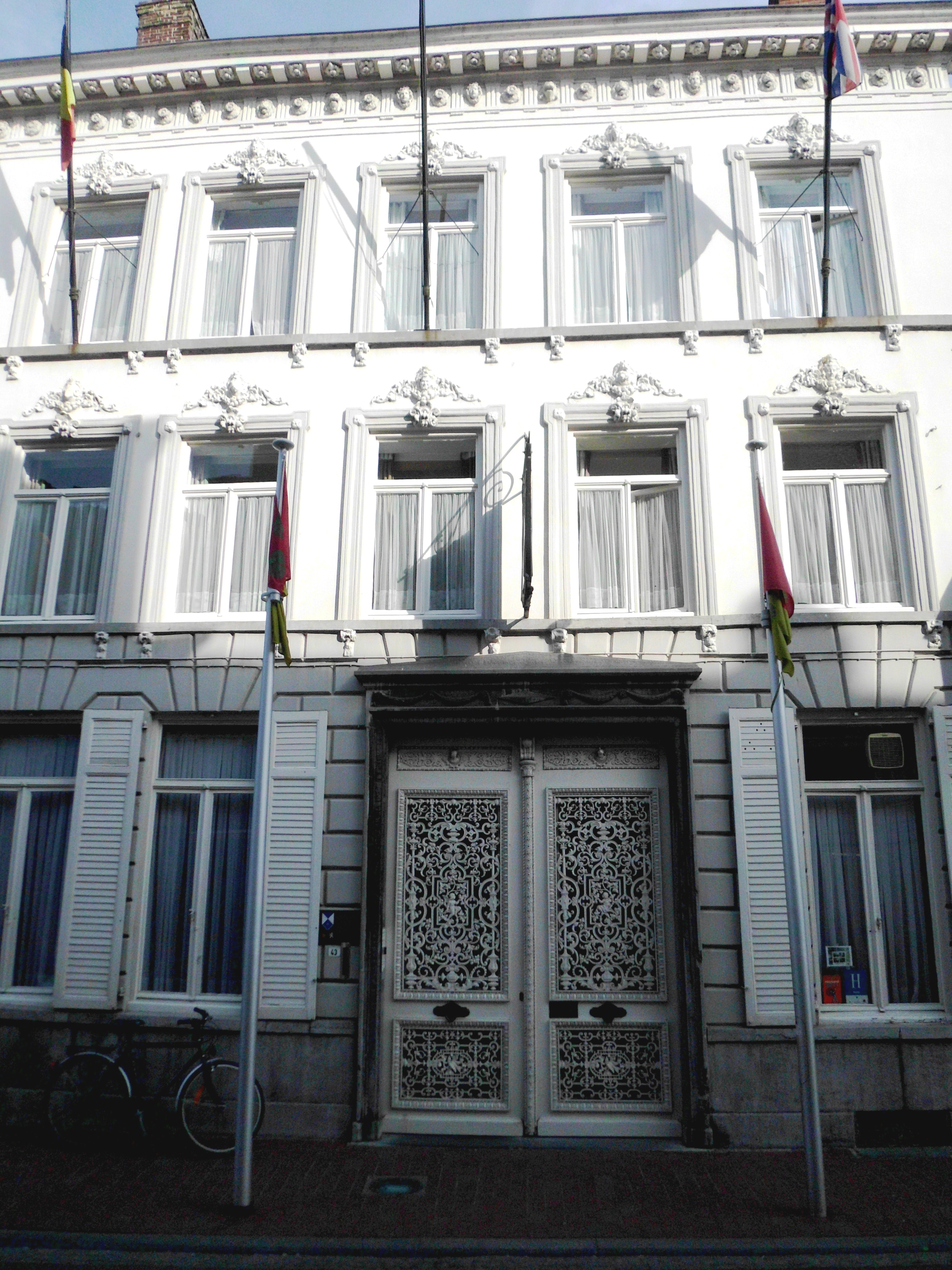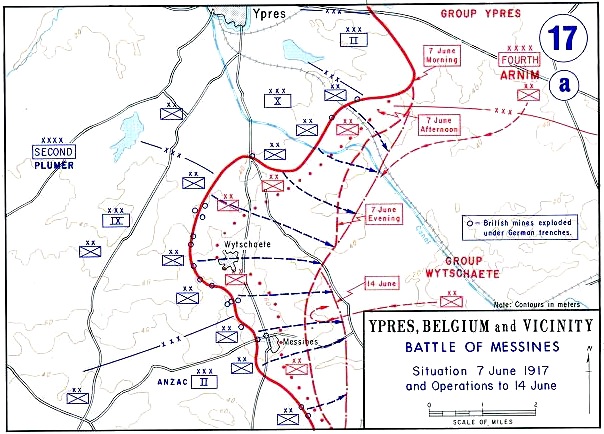|
Lone Tree Commonwealth War Graves Commission Cemetery
Lone Tree Cemetery is a Commonwealth War Graves Commission (CWGC) burial ground for the dead of the First World War located in the Ypres Salient on the Western Front in Belgium. It is located at Spanbroekmolen, on one of the highest points of the Messines Ridge. Foundation Like the Spanbroekmolen cemetery nearby, Lone Tree Cemetery was established in 1917 at the start of the Battle of Messines.Michael Duffy ''The Western Front Today – Lone Tree Cemetery'FirstWorldWar.com22 August 2009, accessed 31 August 2009 Most of the burials are of men from the Royal Irish Rifles 36th (Ulster) DivisionCWGC :: Cemetery Details accessed 31 August 2009 who died on the first day of the battle. [...More Info...] [...Related Items...] OR: [Wikipedia] [Google] [Baidu] |
Commonwealth War Graves Commission
The Commonwealth War Graves Commission (CWGC) is an intergovernmental organisation of six independent member states whose principal function is to mark, record and maintain the graves and places of commemoration of Commonwealth of Nations military service members who died in the two World Wars. The commission is also responsible for commemorating Commonwealth civilians who died as a result of enemy action during the Second World War. The commission was founded by Fabian Ware, Sir Fabian Ware and constituted through Royal Charter in 1917 as the Imperial War Graves Commission. The change to the present name took place in 1960. The commission, as part of its mandate, is responsible for commemorating all Commonwealth war dead individually and equally. To this end, the war dead are commemorated by a name on a headstone, at an identified site of a burial, or on a memorial. War dead are commemorated uniformly and equally, irrespective of military or civil rank, race or creed. The co ... [...More Info...] [...Related Items...] OR: [Wikipedia] [Google] [Baidu] |
Mining (military)
Tunnel warfare involves war being conducted in tunnel and other underground cavities. It often includes the construction of underground facilities (mining or undermining) in order to attack or defend, and the use of existing natural caves and artificial underground facilities for military purposes. Tunnels can be used to undermine fortifications and slip into enemy territory for a surprise attack, while it can strengthen a defense by creating the possibility of ambush, counterattack and the ability to transfer troops from one portion of the battleground to another unseen and protected. Also, tunnels can serve as shelter from enemy attack. Since antiquity, sappers have used mining against walled cites, fortresses, castles or other strongly held and fortified military positions. Defenders have dug counter-mines to attack miners or destroy a mine threatening their fortifications. Since tunnels are commonplace in urban areas, tunnel warfare is often a feature, though usually a min ... [...More Info...] [...Related Items...] OR: [Wikipedia] [Google] [Baidu] |
Commonwealth War Graves Commission Cemeteries In Belgium
A commonwealth is a traditional English term for a political community founded for the common good. Historically, it has been synonymous with "republic". The noun "commonwealth", meaning "public welfare, general good or advantage", dates from the 15th century. Originally a phrase (the common-wealth or the common wealth – echoed in the modern synonym "public wealth"), it comes from the old meaning of "wealth", which is "well-being", and is itself a loose translation of the Latin res publica (republic). The term literally meant "common well-being". In the 17th century, the definition of "commonwealth" expanded from its original sense of "public welfare" or "commonweal" to mean "a state in which the supreme power is vested in the people; a republic or democratic state". The term evolved to become a title to a number of political entities. Three countries – Australia, the Bahamas, and Dominica – have the official title "Commonwealth", as do four U.S. states and two U.S. territo ... [...More Info...] [...Related Items...] OR: [Wikipedia] [Google] [Baidu] |
Find A Grave
Find a Grave is a website that allows the public to search and add to an online database of cemetery records. It is owned by Ancestry.com. Its stated mission is "to help people from all over the world work together to find, record and present final disposition information as a virtual cemetery experience." Volunteers can create memorials, upload photos of grave markers or deceased persons, transcribe photos of headstones, and more. , the site claimed more than 210 million memorials. History The site was created in 1995 by Salt Lake City resident Jim Tipton (born in Alma, Michigan) to support his hobby of visiting the burial sites of celebrities. He later added an online forum. Find a Grave was launched as a commercial entity in 1998, first as a trade name and then incorporated in 2000. The site later expanded to include graves of non-celebrities, in order to allow online visitors to pay respect to their deceased relatives or friends. In 2013, Tipton sold Find a Grave to Ancestry ... [...More Info...] [...Related Items...] OR: [Wikipedia] [Google] [Baidu] |
British Empire
The British Empire was composed of the dominions, colonies, protectorates, mandates, and other territories ruled or administered by the United Kingdom and its predecessor states. It began with the overseas possessions and trading posts established by England between the late 16th and early 18th centuries. At its height it was the largest empire in history and, for over a century, was the foremost global power. By 1913, the British Empire held sway over 412 million people, of the world population at the time, and by 1920, it covered , of the Earth's total land area. As a result, its constitutional, legal, linguistic, and cultural legacy is widespread. At the peak of its power, it was described as "the empire on which the sun never sets", as the Sun was always shining on at least one of its territories. During the Age of Discovery in the 15th and 16th centuries, Portugal and Spain pioneered European exploration of the globe, and in the process established large overse ... [...More Info...] [...Related Items...] OR: [Wikipedia] [Google] [Baidu] |
Albert I Of Belgium
Albert I (8 April 1875 – 17 February 1934) was King of the Belgians from 23 December 1909 until his death in 1934. Born in Brussels as the fifth child and second son of Prince Philippe, Count of Flanders and Princess Marie of Hohenzollern-Sigmaringen, Albert succeeded his uncle, Leopold II, to the Belgian throne in 1909. He married Elisabeth of Bavaria, with whom he had three children. Albert ruled during an eventful period in the history of Belgium, which included the period of World War I (1914–1918), when most of Belgium was occupied by German forces. Other crucial events of his reign included the adoption of the Treaty of Versailles in June 1919, the ruling of the Belgian Congo as an overseas possession of Belgium along with the League of Nations mandate of Ruanda-Urundi, the reconstruction of Belgium following the war, and the first five years of the Great Depression (1929–1934). Albert died in a mountaineering accident in eastern Belgium in 1934, at the age ... [...More Info...] [...Related Items...] OR: [Wikipedia] [Google] [Baidu] |
Cemetery
A cemetery, burial ground, gravesite or graveyard is a place where the remains of dead people are buried or otherwise interred. The word ''cemetery'' (from Greek , "sleeping place") implies that the land is specifically designated as a burial ground and originally applied to the Roman catacombs. The term ''graveyard'' is often used interchangeably with cemetery, but a graveyard primarily refers to a burial ground within a churchyard. The intact or cremated remains of people may be interred in a grave, commonly referred to as burial, or in a tomb, an "above-ground grave" (resembling a sarcophagus), a mausoleum, columbarium, niche, or other edifice. In Western cultures, funeral ceremonies are often observed in cemeteries. These ceremonies or rites of passage differ according to cultural practices and religious beliefs. Modern cemeteries often include crematoria, and some grounds previously used for both, continue as crematoria as a principal use long after the interment ... [...More Info...] [...Related Items...] OR: [Wikipedia] [Google] [Baidu] |
Poperinge
Poperinge (; french: Poperinghe, ; vls, Poperienge) is a city and municipality located in the Belgian province of West Flanders, Flemish Region, and has a history going back to medieval times. The municipality comprises the town of Poperinge proper and surrounding villages. The area is famous for its hops and lace. The town Poperinge is situated about 13 km (8 miles) to the west of Ypres (Ieper). The region is famous for growing hops and furnishes 80% of Belgian production. The town is home to the national hop museum and is called "hops city", ''hoppe stad'' in Dutch, a play on ''hoofd stad'', the word for capital. A triennial hop festival and parade is held in the month of September. The local brew is known as Hommel (which means hops in the West Flanders dialect). The carillon in the tower of the town's oldest church, Sint-Bertinuskerk, was noted as one of the most beautiful in Flanders in mediaeval times. It was destroyed during wartime in 1677 and restored in 1781. Poper ... [...More Info...] [...Related Items...] OR: [Wikipedia] [Google] [Baidu] |
Toc H
Toc H (also TH) is an international Christian movement. The name is an abbreviation for Talbot House, "Toc" signifying the letter T in the signals spelling alphabet used by the British Army in World War I. A soldiers' rest and recreation centre named Talbot House was founded in December 1915 at Poperinghe, Belgium. It aimed to promote Christianity and was named in memory of Gilbert Talbot,Talbot House in Belgium Index page of Belgian Talbot House tourist site son of and Edward Talbot, then |
HMSO
The Office of Public Sector Information (OPSI) is the body responsible for the operation of His Majesty's Stationery Office (HMSO) and of other public information services of the United Kingdom. The OPSI is part of the National Archives of the United Kingdom and is responsible for Crown copyright. The OPSI announced on 21 June 2006 that it was merging with the National Archives. The merger took place in October 2006. The OPSI continues to discharge its roles and responsibilities from within the structure of the National Archives. Controller of HMSO and Director of OPSI The Controller of HMSO is also the Director of OPSI. HMSO continues to operate from within the expanded remit of OPSI. The Controller of HMSO also holds the offices of Kings's Printer of Acts of Parliament, King's Printer for Scotland and Government Printer for Northern Ireland. By virtue of holding these offices OPSI publishes, through HMSO, the '' London Gazette'', ''Edinburgh Gazette'', ''Belfast Gazette'' ... [...More Info...] [...Related Items...] OR: [Wikipedia] [Google] [Baidu] |
Ammonal
Ammonal is an explosive made up of ammonium nitrate and aluminium powder, not to be confused with T-ammonal which contains trinitrotoluene as well to increase properties such as brisance. The mixture is often referred to as Tannerite, which is a brand of ammonal. The ammonium nitrate functions as an oxidizer and the aluminium as fuel. The use of the relatively cheap ammonium nitrate and aluminium makes it a replacement for pure TNT. The mixture is affected by humidity because ammonium nitrate is highly hygroscopic. Ammonal's ease of detonation depends on fuel and oxidizer ratios, 95:5 ammonium nitrate and aluminum being fairly sensitive, however not very oxygen balanced. Even copper metal traces are known to sensitize bulk amounts of ammonium nitrate and further increase danger of spontaneous detonation during a fire, most likely due to the formation of tetramines. More oxygen balanced mixtures are not easily detonated, requiring a fairly substantial shock, though it remains ... [...More Info...] [...Related Items...] OR: [Wikipedia] [Google] [Baidu] |
Mines In The Battle Of Messines (1917)
At the start of the Battle of Messines during the First World War, underground explosive charges were detonated by the British Second Army (General Sir Herbert Plumer) beneath the forward position of the German 4th Army near the village of Mesen (''Messines'' in French, historically used in English), in Belgian West Flanders. The mines, secretly planted by British tunnelling units, created craters and killed approximately 10,000 German soldiers. Their joint explosion ranks among the largest non-nuclear explosions of all time. The evening before the attack, General Sir Charles Harington, Chief of Staff of the Second Army, remarked to the press, "Gentlemen, I don’t know whether we are going to make history tomorrow, but at any rate we shall change geography". The Battle of Messines marked the zenith of mine warfare. On 10 August, the Royal Engineers fired the last British deep mine of the war, at Givenchy-en-Gohelle near Arras. Background British mining, 1915–1916 ... [...More Info...] [...Related Items...] OR: [Wikipedia] [Google] [Baidu] |


.jpg)






